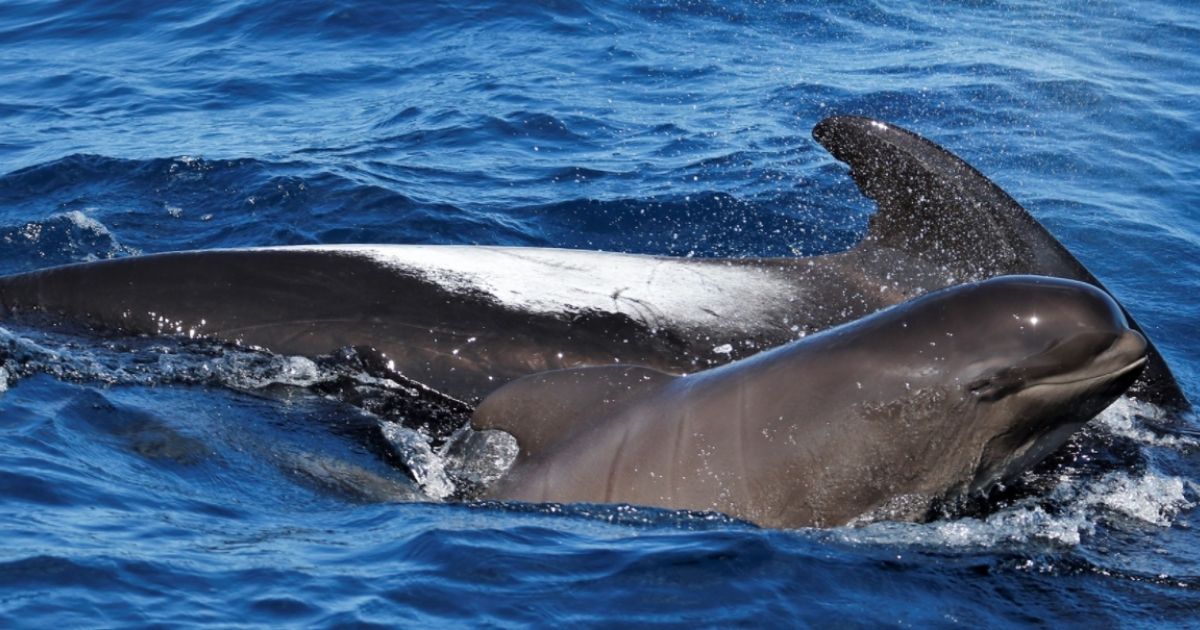Earlier this year, researchers in Paihia, New Zealand, spotted something interesting as they observed a mixed group of whales and dolphins swimming.
There were several species present, but in a surprise to those watching in February, two species seemed to stick together.
The Far Out Ocean Research Collective shared photos along with their observations on Facebook.
[firefly_embed]
[/firefly_embed]
“An interesting observation of an adult oceanic bottlenose dolphin with a new-born long-finned pilot whale off north-eastern New Zealand,” they shared on April 9.
“Earlier in the day, the dolphin was part of a mixed-species group of false killer whales, pilot whales and oceanic bottlenose dolphins.
“However, these photos were taken several hours after the pilot whales had left the group. The bottlenose dolphin is a well-known member of the offshore population. We are processing a lot of photos from recent encounters at the moment and it will be interesting to see if the calf remained with its adoptive mother.
“Bottlenose dolphins are known to occasionally acquire calves of other species but the reasons behind this are still not fully understood.”
It appeared the dolphin had taken the young whale under its flipper, so to speak.
Weeks later, the researchers realized they had spotted the unlikely pair still sticking together, providing an opportunity for them to study the phenomenon more closely.
[firefly_embed]
[/firefly_embed]
“A follow-up to our post on the bottlenose dolphin seen with a pilot whale calf a few weeks ago,” the group posted in an update from May 17. “Upon analyzing our many photos from this season we found another record of the same bottlenose dolphin with (presumably) the same pilot whale calf.
“We have included both photos to show the calf’s growth over the 5-week period.”
In the post as well as in the comments, the team stated it had been tracking this particular dolphin since 2005, and that it was known to hang out with pilot whales.
Researchers couldn’t say whether the dolphin had lost her own baby before appearing to adopt the whale calf.
“It could be a misguided motherly instinct, or she lost her own calf,” Jochen Zaeschmar, a marine researcher with the collective, told TVNZ in Auckland.
Far Out researchers said calf mortality is “quite high in many wild mammals.”
“Predation and disease are two known reasons. Poor parenting skills, insufficient food and pollution are others,” they said on Facebook.
[firefly_embed]
[/firefly_embed]
Zaeschmar said the whale calf likely will find its way back to its kind.
“Pilot whales spend seven years with their calves,” he told TVNZ. “There is a good chance it will eventually join another pod of pilot whales, as they often cross paths.”
This article appeared originally on The Western Journal.
























